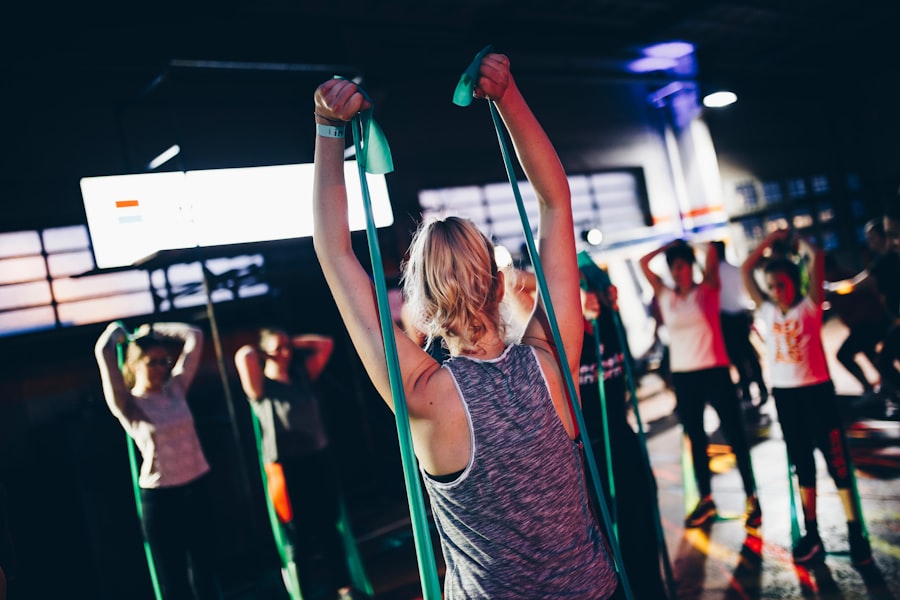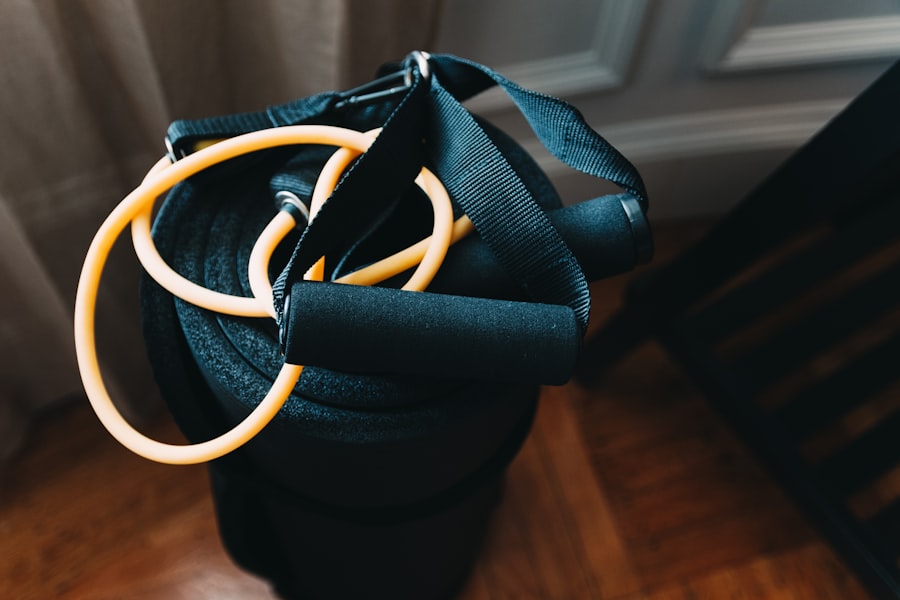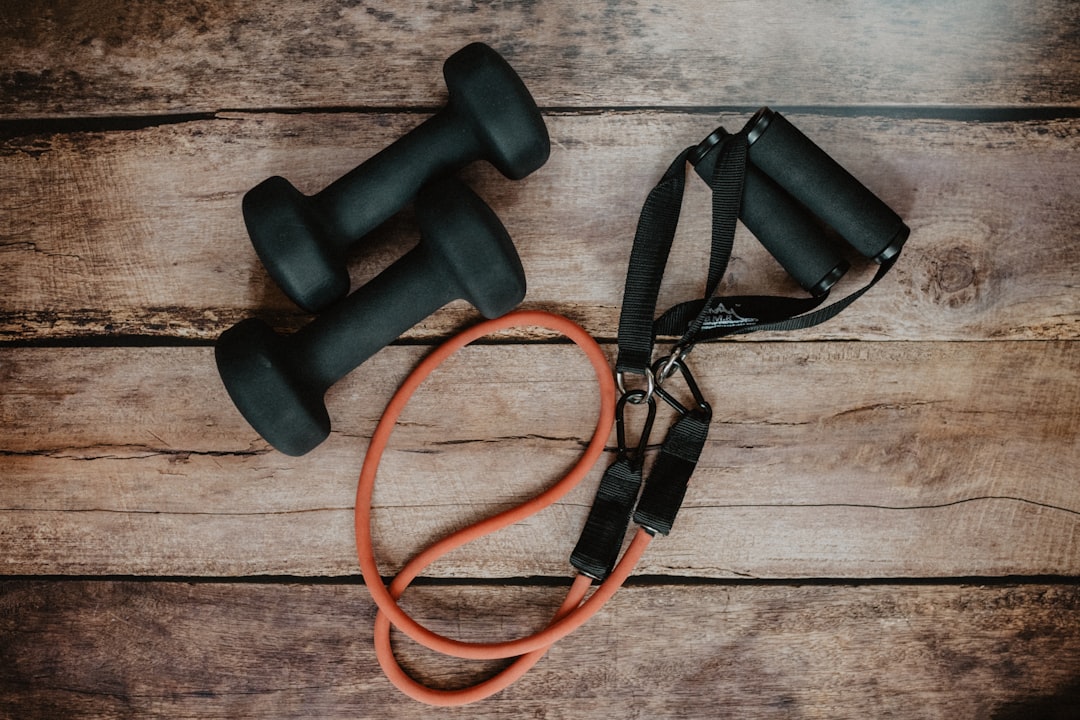In recent years, home workouts have surged in popularity, transforming the way individuals approach fitness. The convenience of exercising at home eliminates many barriers that often deter people from maintaining a regular workout routine. No longer do individuals need to navigate the crowded aisles of a gym or adhere to strict schedules dictated by gym hours.
Instead, they can tailor their fitness regimens to fit their personal lifestyles, preferences, and goals. This shift has been particularly pronounced in the wake of global events that have prompted many to seek alternatives to traditional gym environments. The rise of digital fitness platforms and the availability of online workout classes have further fueled this trend.
With just a smartphone or a computer, individuals can access a plethora of workout videos, ranging from high-intensity interval training (HIIT) to yoga and pilates. This accessibility has democratized fitness, allowing people from various backgrounds and fitness levels to engage in physical activity without the intimidation that sometimes accompanies a gym setting. As we delve deeper into the world of home workouts, it becomes evident that creating an effective home gym can be both practical and enjoyable.
Key Takeaways
- Home workouts offer convenience and flexibility for busy schedules
- Working out at home saves time and money on gym memberships
- Dumbbells and resistance bands are versatile and effective for strength training
- Yoga mats and foam rollers are essential for stretching and recovery
- Jump ropes and stability balls provide cardio and balance training options
Benefits of Working Out at Home
One of the most significant advantages of working out at home is the flexibility it offers. Individuals can choose when and how long they want to exercise, making it easier to fit workouts into busy schedules. This flexibility is particularly beneficial for parents, professionals, or anyone juggling multiple responsibilities.
The ability to work out in the comfort of one’s home also means that there is no need to commute to a gym, saving both time and money. This convenience can lead to more consistent workout habits, as individuals are less likely to skip sessions due to logistical challenges. Moreover, home workouts can be tailored to personal preferences and fitness levels.
Unlike a gym environment where equipment and classes may not always align with individual needs, exercising at home allows for a customized approach. Whether someone prefers strength training, cardio, or mindfulness practices like yoga, they can curate their workout routine to suit their specific goals. This personalization fosters a sense of ownership over one’s fitness journey, which can enhance motivation and adherence to a regular exercise regimen.
Dumbbells and Resistance Bands

Dumbbells are a staple in any home workout arsenal due to their versatility and effectiveness in building strength. They come in various weights, allowing users to progressively increase resistance as they gain strength. Dumbbells can be used for a wide range of exercises targeting different muscle groups, from bicep curls and tricep extensions to squats and lunges.
Their compact size makes them easy to store, and they can be utilized in various spaces within the home, whether it’s a living room or a dedicated workout area. Resistance bands are another excellent addition to a home gym setup. These elastic bands come in different thicknesses and lengths, providing varying levels of resistance for strength training exercises.
They are particularly beneficial for those who may be new to strength training or are recovering from injuries, as they allow for controlled movements that reduce the risk of strain. Resistance bands can be used for exercises such as lateral band walks, seated rows, and glute bridges, making them an effective tool for enhancing muscle tone and stability.
Yoga Mat and Foam Roller
| Product | Material | Size | Color Options |
|---|---|---|---|
| Yoga Mat | PVC, TPE, Rubber | 72″ x 24″ | Blue, Purple, Green, Black |
| Foam Roller | EVA Foam | 12″ x 6″ | Black, Blue, Pink |
A quality yoga mat is essential for anyone looking to incorporate flexibility and balance training into their home workouts. Not only does it provide a comfortable surface for exercises like yoga and pilates, but it also offers cushioning for floor-based movements such as push-ups or sit-ups. The non-slip surface of a yoga mat ensures stability during poses and transitions, allowing individuals to focus on their form without the distraction of slipping or discomfort.
In addition to a yoga mat, a foam roller is an invaluable tool for recovery and muscle maintenance. Foam rolling helps alleviate muscle soreness by promoting blood flow and breaking down knots in the fascia—the connective tissue surrounding muscles. Regular use of a foam roller can enhance flexibility and range of motion while reducing the risk of injury during workouts.
Incorporating foam rolling into a post-workout routine can significantly improve overall performance by ensuring that muscles are well-prepared for subsequent training sessions.
Jump Rope and Stability Ball
Jump ropes are often overlooked but are incredibly effective for cardiovascular conditioning. This simple piece of equipment can elevate heart rates quickly while improving coordination and agility. Jumping rope is not only an excellent calorie-burning exercise but also enhances endurance and footwork, making it a favorite among athletes across various sports disciplines.
The portability of jump ropes allows them to be used virtually anywhere—whether indoors or outdoors—making them an ideal choice for those who want an efficient workout without needing extensive space. The stability ball is another versatile tool that can enhance core strength and stability. It can be used for various exercises, including ball squats, planks, and wall sits.
The instability created by the ball forces the core muscles to engage more actively than they would on a stable surface, leading to improved balance and coordination over time. Additionally, stability balls can be incorporated into stretching routines, providing support during exercises that require flexibility while also promoting proper alignment.
Pull-Up Bar and Suspension Trainer

A pull-up bar is an excellent investment for those looking to build upper body strength at home. It allows users to perform various exercises targeting the back, shoulders, and arms through bodyweight movements such as pull-ups and chin-ups. Many pull-up bars are designed to fit securely in doorways, making them easy to install and remove without damaging walls or door frames.
For those who may struggle with traditional pull-ups initially, resistance bands can be used for assistance until strength improves. Suspension trainers offer another dynamic way to engage multiple muscle groups using body weight as resistance. These systems consist of adjustable straps that can be anchored to doors or other sturdy structures, allowing users to perform a wide range of exercises that challenge stability and strength simultaneously.
Exercises such as suspended push-ups, rows, and lunges can be performed with varying levels of difficulty by adjusting body angles or foot positions. The versatility of suspension trainers makes them suitable for all fitness levels, from beginners to advanced athletes.
Adjustable Bench and Kettlebells
An adjustable bench is a valuable addition to any home gym setup as it expands the range of exercises that can be performed safely and effectively. With adjustable settings for incline, decline, or flat positions, users can target different muscle groups more efficiently during strength training sessions. Exercises such as bench presses, step-ups, and tricep dips become more accessible with the right bench setup.
Additionally, an adjustable bench can serve as a platform for various bodyweight exercises, enhancing overall workout variety. Kettlebells are another versatile piece of equipment that can elevate home workouts significantly. Their unique shape allows for dynamic movements that engage multiple muscle groups simultaneously while also improving cardiovascular fitness.
Kettlebell swings, goblet squats, and Turkish get-ups are just a few examples of exercises that can be performed with this tool. The ability to perform both strength training and functional movements with kettlebells makes them an excellent choice for those looking to maximize their workout efficiency in limited space.
Building Your Home Gym
Creating an effective home gym requires careful consideration of personal fitness goals, available space, and budget constraints. By selecting versatile equipment such as dumbbells, resistance bands, yoga mats, jump ropes, pull-up bars, suspension trainers, adjustable benches, and kettlebells, individuals can design a comprehensive workout environment tailored to their needs. The key is to focus on quality over quantity; investing in a few essential pieces of equipment can yield significant results when combined with dedication and consistency.
Ultimately, the journey toward building a home gym is not just about acquiring equipment; it’s about fostering a sustainable fitness routine that aligns with one’s lifestyle. As individuals explore different workout modalities—from strength training to flexibility exercises—they will discover what resonates most with them personally. This exploration not only enhances physical health but also contributes positively to mental well-being by providing an outlet for stress relief and self-care in the comfort of one’s own space.
FAQs
What are the benefits of using home workout equipment?
Using home workout equipment allows you to exercise at your convenience, saves time and money on gym memberships, and provides privacy and comfort while working out.
What types of home workout equipment are available?
There are various types of home workout equipment available, including cardio machines (treadmills, stationary bikes, ellipticals), strength training equipment (dumbbells, resistance bands, kettlebells), and accessories (yoga mats, stability balls, jump ropes).
How do I choose the right home workout equipment for me?
Consider your fitness goals, available space, budget, and personal preferences when choosing home workout equipment. It’s important to select equipment that aligns with your fitness needs and lifestyle.
Are there any safety considerations when using home workout equipment?
It’s important to use home workout equipment properly and follow safety guidelines to prevent injuries. This includes reading the instruction manual, using proper form, and maintaining the equipment regularly.
Can I get an effective workout using home workout equipment?
Yes, home workout equipment can provide an effective workout when used correctly. It allows you to engage in a variety of exercises to improve cardiovascular health, build strength, and enhance overall fitness.
